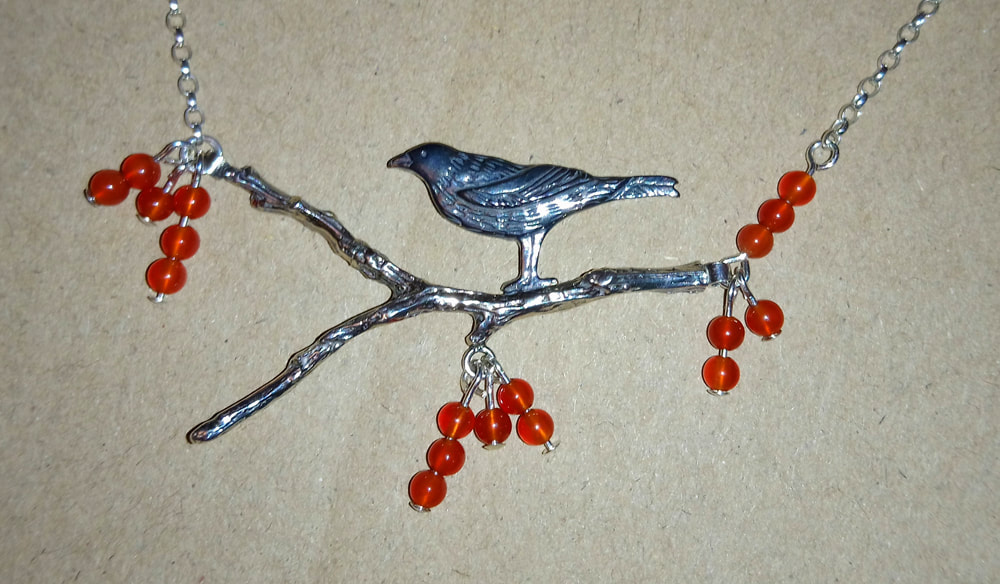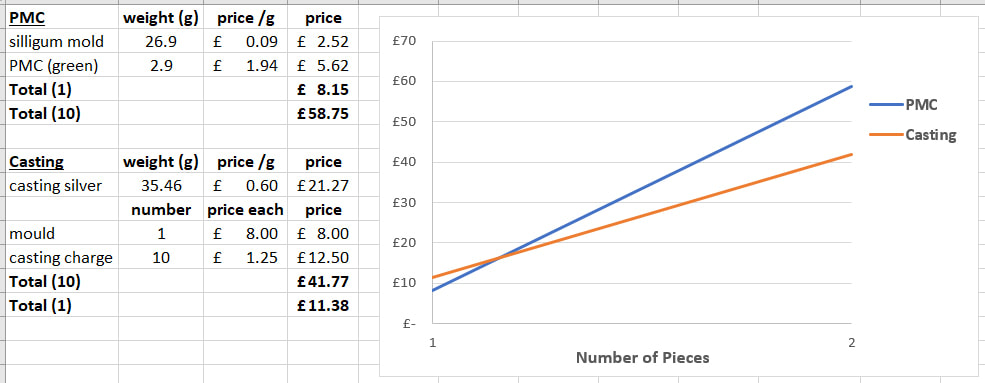02/04/2018 -My Own Multiple Production Process
Apparently this module used to be called “Multiple Production. No mention of casting specifically (nor even in the current module title). I would therefore like to document my own multiple production process that I have developed over the last 8 years. There are a few cons, but I believe that my own process to be quicker, cheaper and more versatile than traditional casting for a small scale producer such as myself (obviously not large scale, mass production).
I have not yet run the maths, so am prepared to be proven wrong.
So the first thing to mention, is the fact that I use fine silver clay (specifically PMC or ArtClay). This is how I got into working in silver and I feel that it is being unfairly snubbed by the traditional jewellery community. I understand why this is. There is some truly TERRIBLE stuff being produced by middle-aged American housewives in metal clay, but like any material, it is only as good as the artist.
Personally, I use it to make the many different sized leaves that adorn my sterling silver designs.
I have not yet run the maths, so am prepared to be proven wrong.
So the first thing to mention, is the fact that I use fine silver clay (specifically PMC or ArtClay). This is how I got into working in silver and I feel that it is being unfairly snubbed by the traditional jewellery community. I understand why this is. There is some truly TERRIBLE stuff being produced by middle-aged American housewives in metal clay, but like any material, it is only as good as the artist.
Personally, I use it to make the many different sized leaves that adorn my sterling silver designs.
I sculpt a master pattern, just like some do in Milliput, and make a Siligum mold. I then fire this master, which results in a slightly smaller piece due to the 10% shrinkage. I will then polish this and take another mold, from which another smaller piece can be produced.
This process of producing copies from molds, that then shrink when fired, means that I end up with a whole series of molds from the same original, in decreasing sizes.
This process of producing copies from molds, that then shrink when fired, means that I end up with a whole series of molds from the same original, in decreasing sizes.
|
In this case I used the blackbird I pierced out for Fine Jewellery Techniques, to get me started.
|
Although silver clay is much more expensive than sterling, I believe that the convenience of being able to produce “castings” in any size, in any number, at any time and without the initial cost of a traditional vulcanised rubber mold, makes this process worthy of consideration and will certainly be a method I continue to use in the future.
The use of the molds are also not just limited to metal. I have used mine over the years to for resin, plastic, polymer clay and ceramic.
The use of the molds are also not just limited to metal. I have used mine over the years to for resin, plastic, polymer clay and ceramic.
|
Cost of mold Mold manufacture Silver cost Lead time Casting quality Silver strength Control of molds Complexity of design |
Traditional Casting
expensive outsource cheap weeks good strong caster 3D |
Silver Clay
cheap home expensive minutes bad brittle me 2D |
The photos I have used above, are of course, a different design to my bracelet link. This is not suitable for an exact price comparison, so I am going to use my original master pattern to produce another link in silver clay.
Much to my chagrin, it seems that my Siligum and silver clay process is only cheaper for a single copy. Any more than that and the cost of the clay rapidly outweighs the initial investment for a traditional rubber mold.
These numbers are of course based on the student rates we got from JHF but I suspect the results will be the same at normal costs.
Quality wise, the silver clay link did not turn out well. It was very had to make the Siligum mold of my master pattern and it’s flexibility did not hold the shape well.
So yes, it does seem that traditional casting wins this particular contest.
These numbers are of course based on the student rates we got from JHF but I suspect the results will be the same at normal costs.
Quality wise, the silver clay link did not turn out well. It was very had to make the Siligum mold of my master pattern and it’s flexibility did not hold the shape well.
So yes, it does seem that traditional casting wins this particular contest.

















